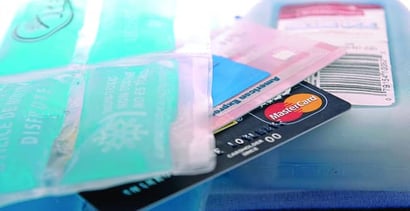

If you have been a victim of identity theft, or even if you suspect someone might have access to your personal financial information, there are steps you can take to protect yourself.
One of the best ways to ensure no one can pose as you and open fraudulent lines of credit in your name is to put a freeze on your credit.
A credit freeze is like a security lock on your credit history, not allowing anyone to access it. With your credit history and all of your credit information frozen, any potential creditor would not be able to verify the validity of a credit application.
With no ability to verify your credit, the application for any new loan, credit card or line of credit would be denied.
This particular way of blocking access to your credit files can be especially effective for anyone who fears their financial information has been compromised. It is also a way to proactively safeguard your credit if you will be away for an extended period and will not need access to new credit.
The steps below tell you exactly how to go about freezing your credit and how to “thaw” it temporarily if you need to.
1. A freeze must be filed with all three credit reporting agencies.
Each of them, Transunion, Experian and Equifax, will charge between $3 and $10 to place a freeze on your credit.
Depending on the particular agency, they may refer to this process as a credit freeze or a security freeze, but they mean the same thing.
2. A credit freeze may be initiated online or by calling the agencies.
Whichever way you decide to put a freeze on your credit, you will be given a personal identification number (PIN) by the agency.
“Knowing your options when
it comes to your credit is important.”
3. No new credit activity can take place on your behalf.
Of course, this also means any legitimate activity initiated by you may be delayed as well. This can involve insurance applications, employment screening, utility or cell phone applications and even some government payments.
If you anticipate the need to provide access to your credit, you can lift the freeze for a limited time by contacting the bureaus and using your PIN. Note that the same charge of between $3 and $10 will apply each time you have the freeze temporarily lifted.
4. Some things to keep in mind…
A credit freeze does not prevent a credit card that has already been stolen from being used. It also may not prevent a pre-approved credit application that has been intercepted from being submitted.
Finally, it would not prevent the redirection of existing accounts to a new address. For this reason, a fraud alert may also be needed if you are certain your financial identity has been stolen.
5. A freeze alone will not impact your score.
However, if you suspect your credit information has been stolen, you should be especially diligent in checking your credit report often. At the first sign of any improper charges or activity, notify the reporting agencies immediately.
Knowing your options when it comes to your credit and financial well-being is important. Also, being aware of what activity is taking place under your name can save you from financial hardship or worse.
Take the time to check your credit report frequently and monitor it for fraud. We are all responsible for keeping our financial identity safe, so protect yours carefully.
Photo Source: lgfcunewsworks.org
Advertiser Disclosure
BadCredit.org is a free online resource that offers valuable content and comparison services to users. To keep this resource 100% free for users, we receive advertising compensation from the financial products listed on this page. Along with key review factors, this compensation may impact how and where products appear on the page (including, for example, the order in which they appear). BadCredit.org does not include listings for all financial products.
Our Editorial Review Policy
Our site is committed to publishing independent, accurate content guided by strict editorial guidelines. Before articles and reviews are published on our site, they undergo a thorough review process performed by a team of independent editors and subject-matter experts to ensure the content’s accuracy, timeliness, and impartiality. Our editorial team is separate and independent of our site’s advertisers, and the opinions they express on our site are their own. To read more about our team members and their editorial backgrounds, please visit our site’s About page.




